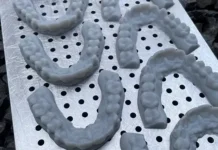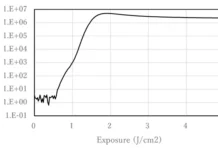By David A. Walker, Ph.D., executive chairperson, PAMA
It’s easy to think, given the continuous news stream of emerging applications, that 3D printing is ready to take the world by storm… but there remain missing puzzle pieces that 3D printing resin formulators need in order to enter key markets and grow beyond dental applications. From many of the envisioned applications, which feed up into consumer products, two major needs have emerged: flame-resistant photopolymers and green/sustainable materials.
Recently, PAMA hosted a webinar on the topic of flame-resistant photopolymers where market needs were discussed with participants from Carbon, Henkel and UL Solutions. During the webinar, one theme emerged – there are a limited set of materials available for formulating flame-resistant photopolymers.
Henkel was the first big name to get a flame-resistant photopolymer resin (Loctite 3955) to the additive manufacturing market in 2019, passing vertical burn (V0) tests from UL Solutions and receiving a “Blue-Card.” To achieve this accomplishment, the formulator had to make an unusual compromise – namely, that the liquid resin is a solid at room temperature and requires pre-heating to 80o C before it can be added to the print-vat as a liquid.
In 2021, 3D Systems launched a resin for its Figure 4 printer (High Temp 150C FR Black) with similar tensile properties as the Henkel resin and with a key advancement – it was a liquid at room temperature, making processing environments easier for the users.
Not to be outdone, Carbon would join the party in 2022 by releasing its long-anticipated flame-resistant variant of the company’s popular EPX 82 material line, called EPX 86FR. While this material arrived with the disadvantage of being the only two-part resin (i.e., the user must mix two parts before printing, and the mixture has a limited pot-life), it brought a higher tensile strength and higher elongation at break to afford the material a much larger toughness than the earlier materials.
While these three resins have provided the field with an important starting point for flame-resistant materials, end users have continued to request materials with increased durability and toughness. At the same time, the limited number of liquid non-halogenated flame retardants limit the ability of formulators to push beyond some of these rigid/brittle material classes. For 3D printing to be adopted in the range of applications envisioned, it will be necessary for manufacturers to offer a range of flame-resistant materials. It’s easy to say that a 3D printing company will target the aerospace market… but even the simplest plastic bracket in an airline seat’s headrest is subject to stringent flame-retardant standards.
While manufacturers and regulators will require both improved safety and performance from resin formulators, their customers simultaneously are demanding that products be made in more ecologically friendly ways and from sustainable feedstocks. 3D printing vast quantities of plastic tchotchkes, only to have them join their brethren in the great Pacific garbage patch, quickly has fallen out of fashion. Some manufacturers have started to prioritize bio-sourced or biodegradable 3D printing over factors such as cost or performance.
Yet, when one looks through materials catalogs, there remain almost no materials available outside of the tried and true isobornyl derivatives. And one can only get so creative with soybean oil. If chemical suppliers cannot bring more bio-sourced or biodegradable materials to market to enable formulators, it will become harder and harder for 3D printing to grow in the consumer products market space.





